Links to Follow to The Mother Earth News Blogs
Some of you know that I’ve been posting on the Mother Earth News Blogs for almost two years. I’m going to include some links to blog posts that relate to compost.
Biological Farming Trending Up- an exciting workshop on cover crops and mob grazing held near Lawrence Kansas. Big changes in agriculture are on the way!
Winter Worm Composting- I like to have the worms convert my compost pile into pure worm castings. Keeping them alive over the winter really helps that goal. This blog describes a method of keeping our little friends busy throughout the cold months.
A Rind is a Terrible Thing to Waste- I illustrate lots of ways to benefit from the energy in food even if we don’t eat it.
Re-Carbonizing the Planet- Biochar isn’t compost but its another technique to build soil organic matter by providing a physical infrastructure for micro-biota.
Happy Holidays.
Composting is great, but producing your own vermicompost has even more advantages. Vermicompost is created in a compost-type environment that is dominated by worms. I’s not all worm castings(fecal pellets) OK It’s worm poop, but the worms are in charge. I call them “The Overlords of the Underworld.” Vermicompost is compost on steroids, more of everything is a concentrated package. Putting worms to work for you is easy once you understand a few simple principles.
The system I’m suggesting avoids the turning and watering of conventional composting as well as producing a more potent soil amendment. 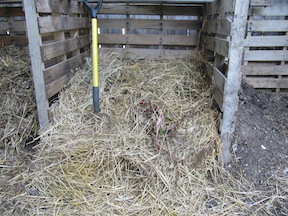
Step 1. Fill your bin with browns and greens or just browns if that’s what you’ve got. Wheat straw works great! If the pile heats up and partially composts the mass, that’s a good thing but not essential.
Under this unlikely looking pile of dry straw,
there’s a raging worm farm.
Step 2. Add vegetable scraps (no meat, dairy, animal products for best results) by lifting a layer of the straw or leaves and burying the scraps in the pile. If you have big volumes from a large family or canning time then layer your scraps with dry brown material. Just don’t dump a five gallon bucket in one place in the pile unless you don’t care about odor. Remember, that stink is wasted nitrogen that could become the protein in the bodies of even more of your helpers. Plus it could upset the neighbors or attract vermin.
There’s important work going on in that black core. Feed the critters well and them do their thing.
Step 3. Don’t turn the pile. The dry brown material is insulating the mass of critters from the outside world. Once you create a core of black compost, start depositing the the food scraps out to the edges of the pile to encourage the core to expand. The worms will work their way out to near the edges, eventually leaving just a thin layer of brown insulation.
Step 4. Build it and they will come. Once there is a some compost forming in the center of your pile, you can introduce red wiggler worms a. from the garden (might work), b. buy some red wigglers at the bait shop (probably too expensive) or c. buy a pound of worms online. d. All my worms came from the soil in my backyard twenty years ago. They just smelled a compost party and joined in.

Step 5. Keep it up! You’ll attract sow bugs, bacteria and the usual composting crowd. The food scraps add and maintain the moisture and nitrogen needed. The browns supply needed carbs and cover. Keep adding layers of browns and food scraps throughout the season. Just keep it up and a thick black layer will form in the bottom of your pile. You can peek, just don’t disturb your workers.
This “core” is raplidly forning vermicompost. Worms are only the largest member of the team, however. Lots of other critters are involved.
Next we’ll talk about harvesting the black gold and keeping it going year ‘round.
Any Questions?
Rot on!
May 10. 2012
Compost Road Show
This week and next I’m traveling through seven Ozark counties delivering 14 programs to both elementary and secondary students. I’m excited about this for several reasons.
First It’s been almost a year in coming as I wrote the specifications for this grant, bid on this grant and won this grant over a 10 month period. It’s the first time in my 22 years of educating about the environment that i’ve gotten to present an all-compost assembly.
Second, the program includes two special features that were designed and developed just for this event. One is The People Pile.
It’s a skit in which kids play the ingredients of a compost pile, the greens, browns, bacteria, water and heat. There’s a narrator and a magic composter kid who has the bright idea to see what happens when you pile up organic materials. So far the skit has been going well and the audiences like seeing a play by their classmates.


The second special feature is a worm observation live on a big screen using a USB powered microscope through my computer.

As I present the value of worms in composting, I finish by putting the microscope on a worm colony showing adult worms, their transparent babies and their fellow denisens of a worm colony.
Some of the most fun programs have been to Agriculture classes. My perspective is very different than the teacher’s but often brings out some interesting synergies. The students really enjoy the music and the fun topic of composting.

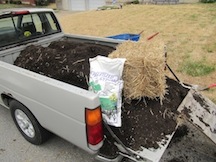
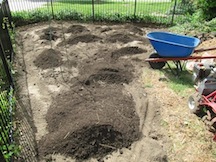
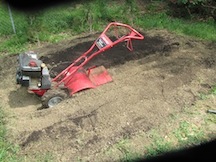 till the garden, apply the compost and gypsum and then till the compost in. So far I’ve done 5 gardens and it’s very satisfying.
till the garden, apply the compost and gypsum and then till the compost in. So far I’ve done 5 gardens and it’s very satisfying. 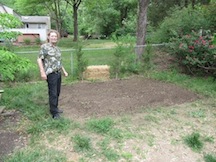 I’m looking forward to the “harvest” photos of the veggies my clients are able to grow.
I’m looking forward to the “harvest” photos of the veggies my clients are able to grow.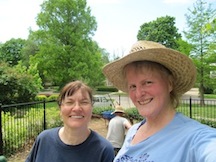
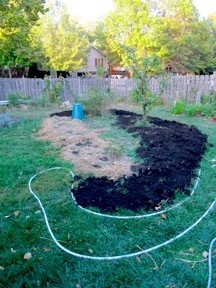
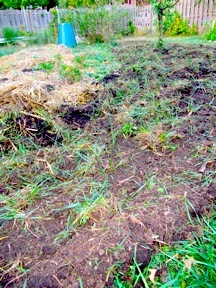
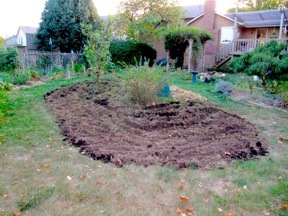
February 25, 2011
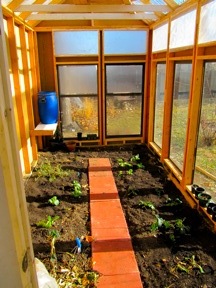
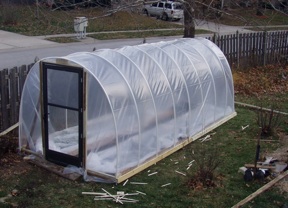
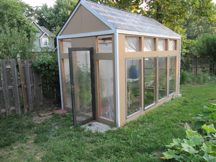 would be even more flexible in helping our food production. Fortunately my worm bins had a ready supply of vermicompost and today I gave all the baby kale and spinach some real nutrition. There are still some details to work out but there are lots of plants growing now and lots more on the way. This greenhouse has the disadvantage of having more framing and not as much light as the hoop house, but it also doesn’t get as hot in the summer. It gets plenty warm in the winter.
would be even more flexible in helping our food production. Fortunately my worm bins had a ready supply of vermicompost and today I gave all the baby kale and spinach some real nutrition. There are still some details to work out but there are lots of plants growing now and lots more on the way. This greenhouse has the disadvantage of having more framing and not as much light as the hoop house, but it also doesn’t get as hot in the summer. It gets plenty warm in the winter.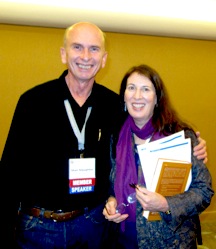 She’s publishing a new reference book that incorporates much of the latest research. She also has a new 5th Grade School Enrichment Curriculum on using red worms in the classroom. It’s a free download!
She’s publishing a new reference book that incorporates much of the latest research. She also has a new 5th Grade School Enrichment Curriculum on using red worms in the classroom. It’s a free download!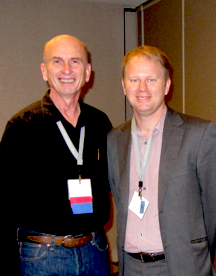 His group coordinates education and development of composting throughout the country. Other attendees were associated with California’s composting agency, Cedar Grove Composting of Seattle, Proctor and Gamble’s packaging group and Stanford University. The good news is that they liked the workshop and learned some new tools to teach children and the public about the wonders of compost.
His group coordinates education and development of composting throughout the country. Other attendees were associated with California’s composting agency, Cedar Grove Composting of Seattle, Proctor and Gamble’s packaging group and Stanford University. The good news is that they liked the workshop and learned some new tools to teach children and the public about the wonders of compost.
January 21, 2011
We’re off Sunday to Santa Clara to present at the US Compost Council’s annual convention. It’s a 3.5 hour workshop Monday on Best Practices in Compost Education. Linda and I are both really excited as we’re got a skit, some songs and some great information about the process of creating Organic Literacy in the public. It will be great to get back there eleven years since I was awarded their Compost Educator of the Year award in 2000. It’s a huge deal with over 1,000 attendees. We’ll have fun, you do the same.
My composting experience.
After 11 years as a science teacher (with a Masters in Biology) my first real composting experience came outside the classroom. Moving to a rural area, I found I needed to protect my water source from contamination, so I researched and built a composting toilet. Soon, I was building them for others, and publishing a guidebook on how to do it.
In 1991, I proposed a composting education project for the Kansas City, Missouri region. That composting education project was funded by a collaboration of the Hallmark Foundation, Kansas City Power and Light, and KC’s Waste Minimization Commission. I made 238 public appearances the first year, speaking at Lion’s Clubs, Lawn & Garden shows, and lots of schools. By the second year we had the Compost Trailer (see photo) outfitted and traveling with me. 
Since that first year, composting education and teaching recycling and other waste reduction strategies has been my full time job. It’s taken me to 25 states and thousands of schools. My clients have been cities, states, counties, schools, and solid waste management agencies all over the country. To help me in educating kids and adults about compost, I’ve developed the products you see here on the web site and delivered scores of workshop. My guitar has never been far behind.
Singing about compost sounds pretty strange but it’s a great way to shift the mood and get a crowd warmed up to the message.
I’m interested in your situation and the ways you use compost in your area. That’s one of the ways that I’ve been able to learn the most. Please let me know if this site doesn’t have the answer you are looking for. I’d like to help. Contact me directly about compost workshops, compost keynotes, and compost questions.
Thanks very Mulch,
Stan Slaughter
America’s Eco-Troubadour


